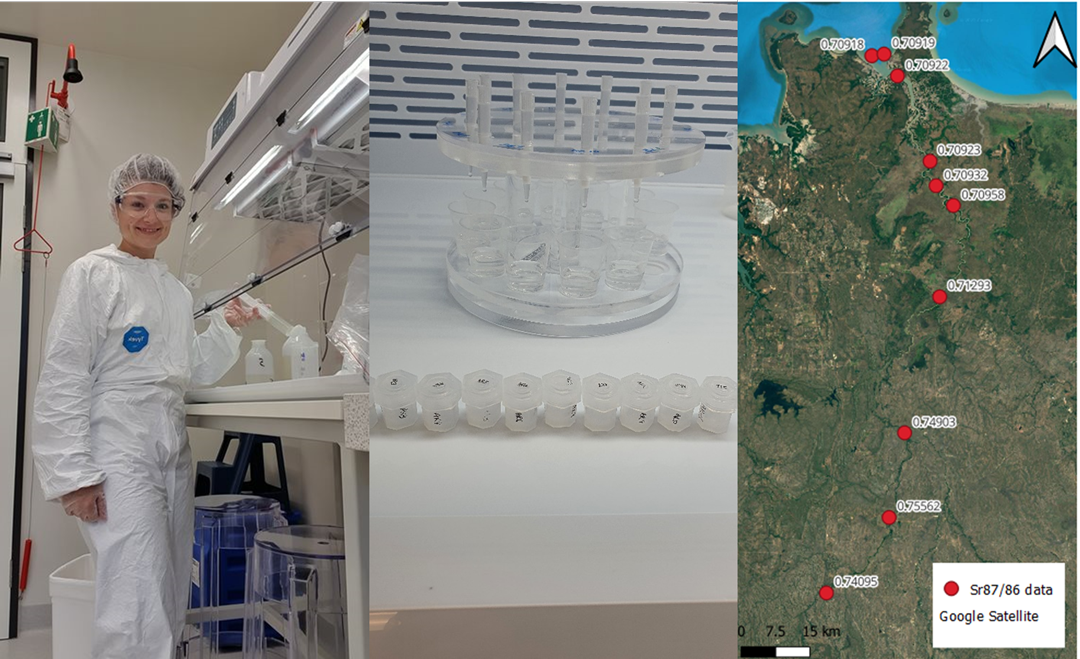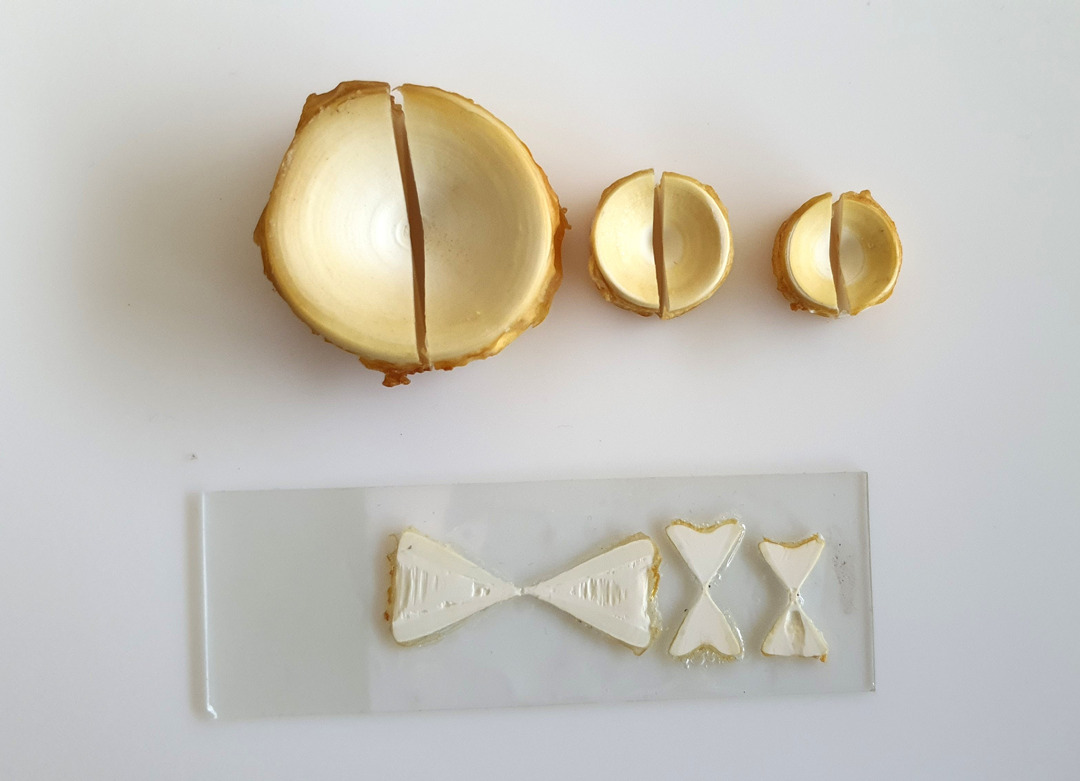Where did you come from?
Our project aims to understand better the life history of the Speartooth Shark (Glyphis glyphis). This rare river shark occupies the Adelaide River, Northern Territory, Australia, through comparative chemistry of their riverine-to-coastal environment and time-resolved vertebral microchemistry.
Speartooth sharks inhabit coastal marine waters and tropical northern Australia and New Guinea macro-tidal river systems. These sharks love turbid waters and tolerate a wide range of salinities, from freshwater to marine, from upstream in the Adelaide River to its coastal outlet. To better understand how this species is distributed across this salinity gradient throughout its life history, one of the primary aims of our project is first to characterise the ‘chemical signature’ of their aqueous habitat. In addition to the contextual information this provides, because the vertebrae and other hard tissues of sharks (and other marine vertebrates) incorporate the chemical signature of their environment, we can use these water chemical signatures to infer the life history of Speartooth sharks. We do this by finding the chemical signatures within the growth bands in their vertebrae. For example, metals such as strontium and barium can tell us about the water nutrient profile the sharks are moving in (or between). We can even take this a step further and look at the proportions of various isotopes of the same elements, which can often be used as a more exacting tool to determine geographic location and movement/migration between catchments.

Figure 1 Lab work and Ion Exchange Chromatography to create an isoscape of the riverine strontium isotope composition. Photo © Hilary Lewis
More specifically for isotopes, the ratio of strontium (Sr) isotopes from radioactive decay (“radiogenic” Sr) is commonly used to reconstruct the life histories of diadromous fishes because the proportions of certain Sr isotopes (isotope ratios, such as Sr isotope masses 87 and 86) can be linked back to geographic location. We know that strontium is incorporated from the environment for vertebral growth in sharks, and its relative concentration in vertebrae is dependent on ambient environmental concentrations. We also know that Sr is incorporated into the bio-apatite cartilage matrix due to size and ion charge similarities with calcium. This generally does not suffer from diagenetic alteration (in this case, chemical changes after mineralisation) or measurable isotope fractionation during secondary processes.
The global average 87Sr/86Sr isotope ratio is very well-known and homogeneous, and Sr concentrations are generally higher in marine environments than in freshwater systems. This means we can characterise Sr concentrations and 87Sr/86Sr isotope ratios for freshwater environments and compare this against a largely homogenised marine signature. In doing so, we can detect freshwater vs marine chemical signatures along the growth axis of shark vertebrae. This allows us to use vertebral band chemical signatures to track sharks’ movements between water systems throughout their life history!

Photo © Hilary Lewis
To quantify the strontium and strontium isotope signatures of the Adelaide River, water samples were collected by our collaborator Dr Peter Kyne (Charles Darwin University), stretching from freshwater (200 km inland) to inshore marine habitats around the river mouth. These water samples and their collection coordinates were sent to the JCU IsoTropics Geochemistry Lab (Townsville). From here, we filtered and acidified the samples and quantified the elemental concentrations before conducting ion exchange chromatography (IEC) to isolate Sr for isotopic analyses. We then link all this elemental and isotopic data back to individual collection coordinates to generate a riverine “isoscape” of the Adelaide River according to the changes in strontium isotope values. These results show a strong gradient in 87Sr/86Sr in the river, ranging from a characteristic mean oceanic signature to a strongly radiogenic (high 87Sr/86Sr) upstream freshwater signature, which reflects the unique geologic base rock of the catchment and human inputs in the local terrestrial environment. Understanding the Sr profile of the river will now allow us to examine the Sr isotope in our river shark vertebrae samples to reconstruct their movements and habitat use throughout their life history.
